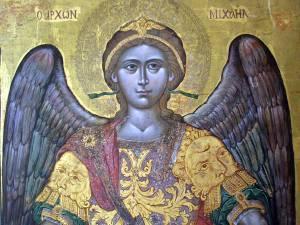Zakynthos History
Ulysses led the brave Cephallenians, who held Ithaca, Neritum with its forests, ... and Zakynthos, with the mainland also that was over against the islands. These were led by Ulysses, peer of Jove in counsel, and with him there came twelve ships. (Homer's Iliad; Written 800 B.C.E. Translated by Samuel Butler)
 The recorded history of Zakynthos starts from the Paleolithic and Neolithic eras, traces of which were discovered at the Bay of Lagana. The finds included bone fossils of the Palaeolithic era.
According to the poet Homer, the name of Zakynthos is derived from the first inhabitant of the island, who was named Zakynthos and was the son of King Dardanos of Troy, who arrived on the island around 1500-1600 B.C.
According to other historic sources, the name of the island is derived from the words Za and Cynthos or Kynthos, which means hill and corresponds to the island’s mountainous landscape. Cynthos was a common name for hills in antiquity; the Delos hill was also named this way, so, in case you did not know where the name Cynthia comes from, you do now!
Another colony of Zakynthos was also Kydonies on Crete. Moreover, they founded the city of Fokida in collaboration with the Fokais. Afterward, Zakynthos was conquered by the king of Keffalonia, Arkisios, and was subsequently reconquered by Ulysses, son of Laertis who was the King of Ithaka. It was under him that Zakynthos joined the expedition against Troy (See introduction above). Upon Ulysses’ return to Ithaka, and with Neoptolemos’ mediation, a treaty was signed granting autonomy and democratic governing to the island. The treaty was the first of its kind throughout the Hellenic area. This era lasted 650 years. In the 6th century, silver currency is initiated which depicts Apollon Tripod (three-legged).
Zakynthos remained neutral during the Persian war until the battle of Plataies, when they drove the Persians back to Asia, having formed an alliance with the Lacedaemonians. In 455 B.C. they allied with the Athenians and, during the Peloponnesian war, Zakynthos and Corfu faced the Korinthians. After the defeat of the Athenians in Cicily, Zakynthos was conquered by the Lacedaemonians, who imposed an oligarchic regime. Later on, however, the inhabitants rebelled and re-established democracy.
It is believed that the persons who first taught Christian principles on the island in 34 A.D. were Maria Magdalene and Maria Klopa, who passed while on their way to Rome. The name of the village Maries serves as a proof of this fact. The fore-mentioned event is still commemorated annually in that village with a great feast. During the Byzantine era, Constantine the Great included Zakynthos in the province of Illyria. During this era, Zakynthos suffered from pirate attacks. The island was repeatedly destroyed by the crusaders due to its crucial geographic position (passage from the East to the West), until it was finally occupied by the Venetians in 1084. From the end of the 12 century and up to 1357, the island was under French occupation. In 1357 the De Toli dynasty settled on the island. They contributed to the administrative and economic organization which led to a subsequent growth and development of the island until the Turkish attack, when the island was looted and the inhabitants were exiled to the Peloponnese. Five years later in 1485, the Venetians occupied the island and offered the inhabitants fields and homes upon their return. The names of the Venetian nobility are recorded in the famous Libro d’oro of Zakynthos. The island developed after being densely populated and reorganized. The city was reconstructed in an impressive architectural style and was named the Florence of Greece. The separation of the population in “nobili,” “civil,” and “popolari” caused the exploitation of the popolari by the nobili. The popolari rebelled against the nobili from 1628 until 1632. The revolution became known in the rest of Europe as the “rebellion of the popolari.”
Meanwhile, the rest of Greece was under Turkish occupation. “Filiki Etairia,” which was a secret organization promoting the rebellion against the Turks, had its base in Zakynthos.
In 1851 a Member of the Parliament, Ioannis Typaldos Kapelatos, suggested the union of the Seven Islands (Eptanisa) with Greece. The British reacted violently. The Zakynthians, under the leadership of Konstantinos Lomvardos, carried on with their struggle for the union of the Eptanisa with Greece. Thus, on May 21 1864, the Greek flag was hoisted on the island to welcome the Greek army.
During WWII Zakynthos was occupied by the Italians and the Germans, until it was liberated on September 12, 1944.
The earthquake in 1953 destroyed most of the monuments of the cultural development of the island, and the few still remaining give only a slight glimpse of its glorious past. |
|



